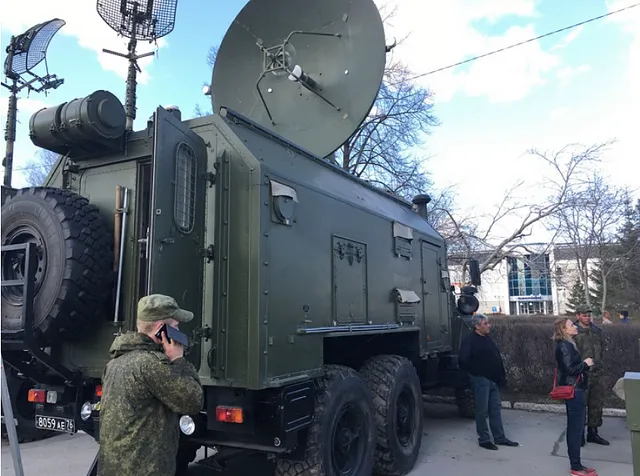Selfies Expose Russia’s Arctic Bases
Mapping Russia’s High North presence from social media posts
Selfies Expose Russia’s Arctic Bases
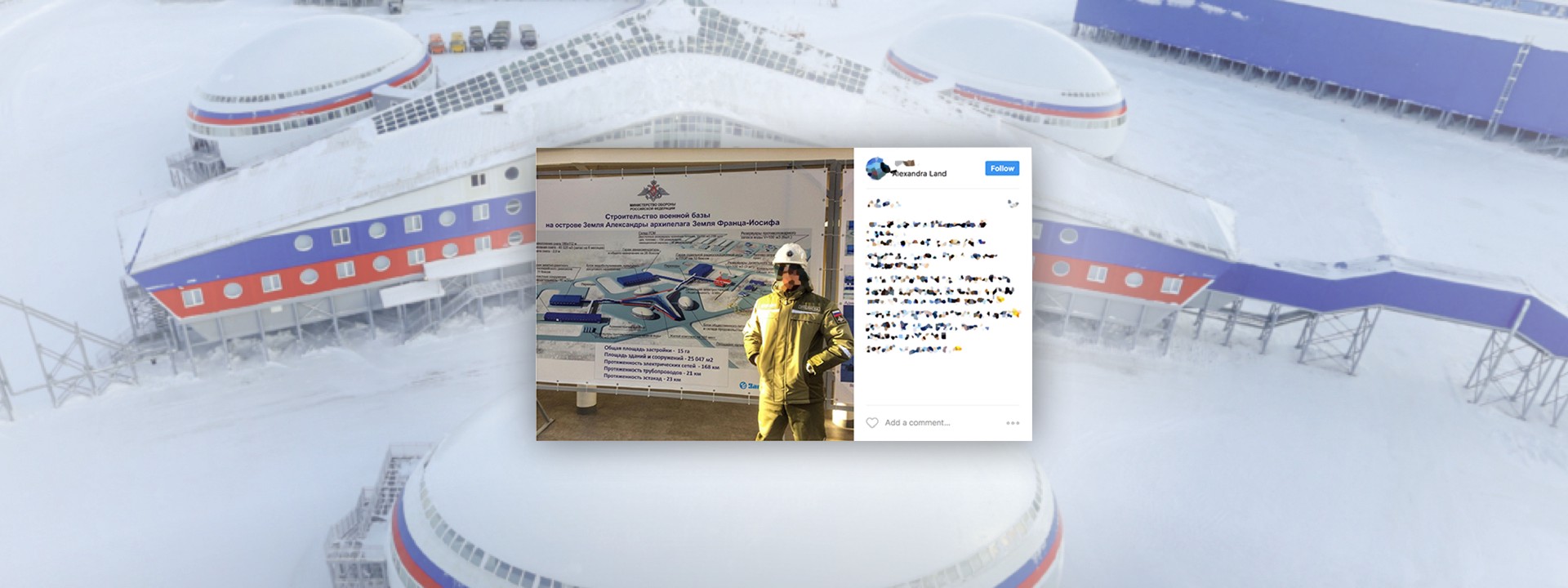
BANNER: Selfie taken during the construction of the Arctic Trefoil base, showing the plan of the complex. The profile and exchange have been blurred to protect the identify of the individuals.
On April 17, the Russian Federation’s Ministry of Defense published carefully selected footage and a virtual tour of its newest Arctic military base, Arctic Trefoil (Арктическтй трилистник, also referred to as “Arctic Shamrock”).
The move appeared to be a brilliant piece of propaganda, highlighting Russia’s technical and military capabilities, and its presence in the High North. The very decoration of the base, painted in the Russian national colors, was a declaration of national pride.
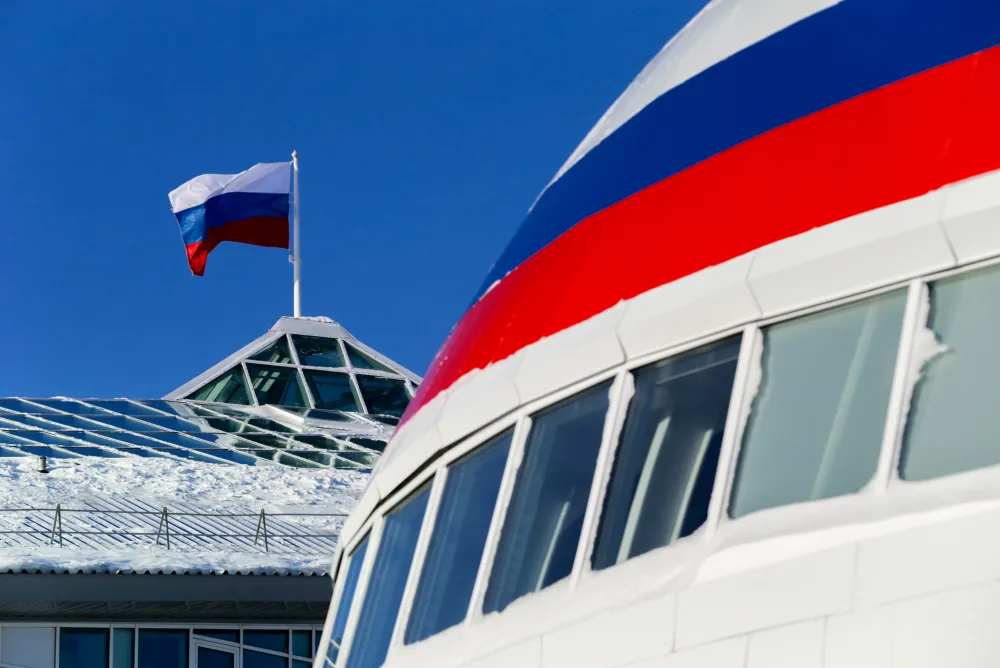
The publication came on the heels of an official visit by Russian President Vladimir Putin, who toured the site on March 30.
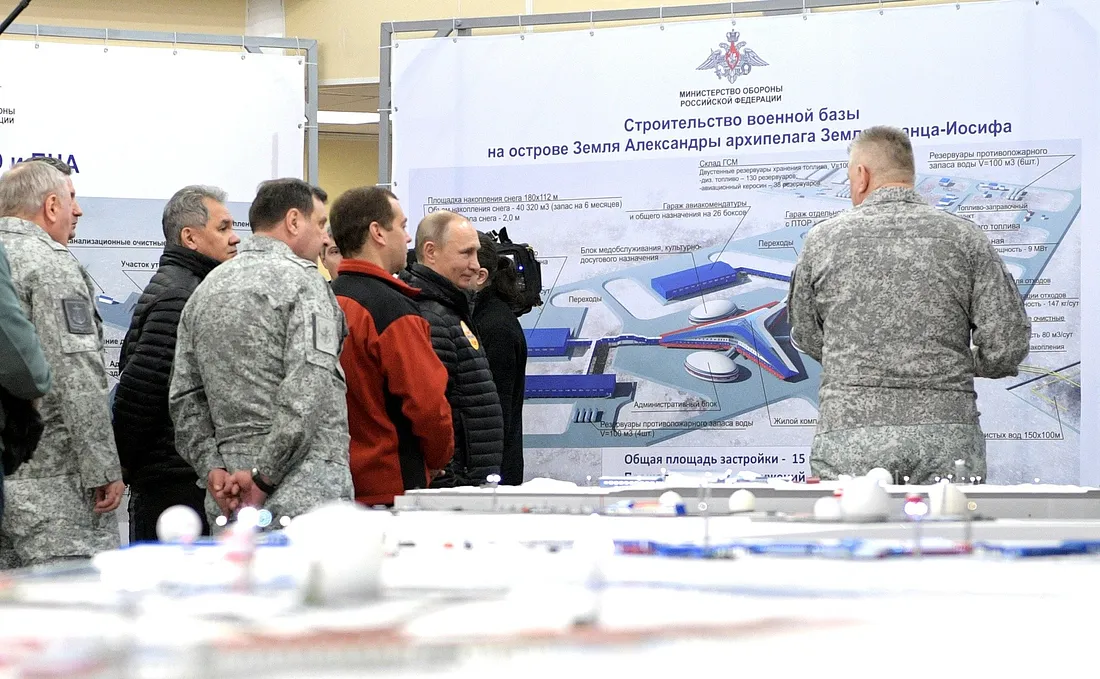
Russia’s Arctic bases are a source of great national pride and significant national coverage. A similar media fanfare welcomed the opening of Russia’s first prestige Arctic base, Northern Clover (Северный клевер), in 2015.
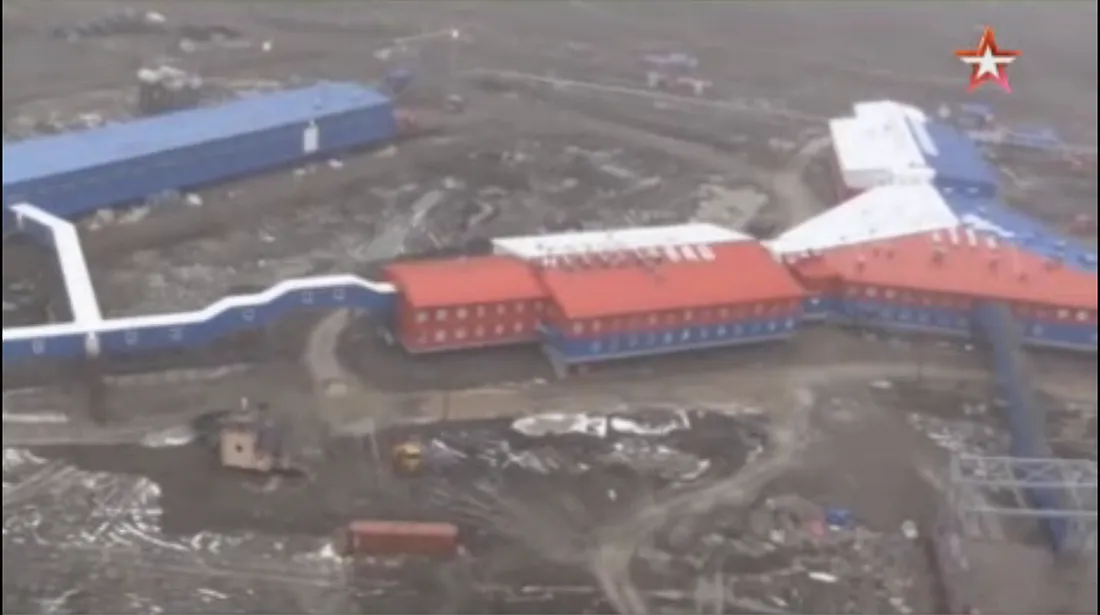
Both launches were, understandably, designed to show off the sites’ living quarters without revealing sensitive operational details. Even so, the burst of transparency does not appear to have lasted. As of April 24, the Ministry web-page hosting the virtual tour had been taken offline, apparently for “prophylactic work.”
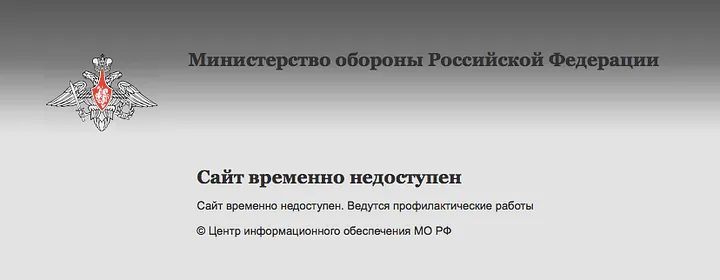
Nonetheless, thanks to social media posts, we’ve been able to learn more about both Arctic bases than their owners would, perhaps, have wanted.
Official portrait
Arctic Trefoil is located on Alexandra Land, the westernmost island in the Franz Josef Land archipelago, on the 80th parallel of latitude. According to the Russian Ministry of Defense, it is capable of housing up to 150 soldiers for an 18-month period.
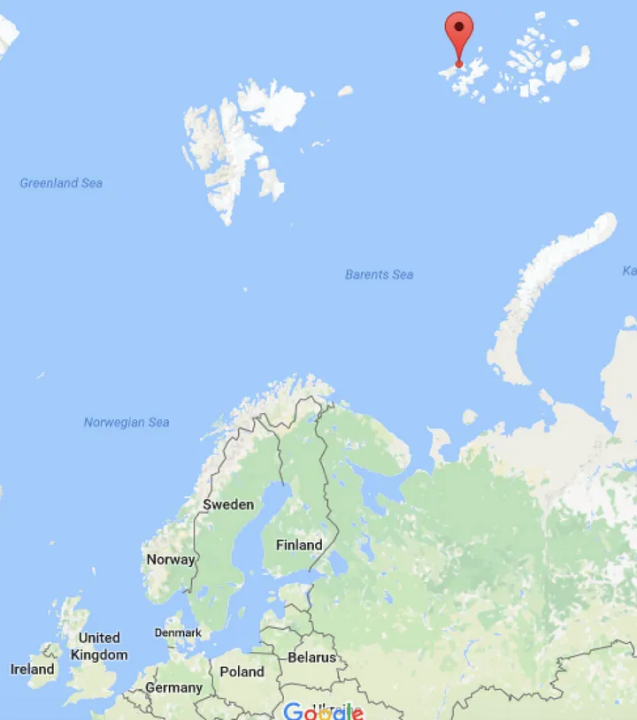
According to official MoD images shared by the Barents Observer, the center of the complex is a three-armed building with domed annexes nestled within the three arms.
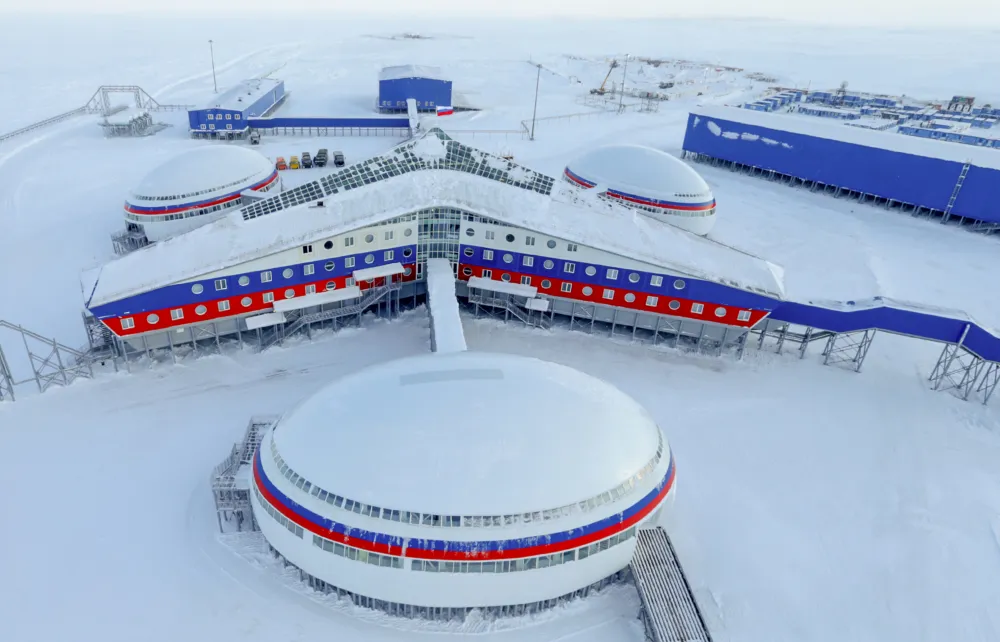
Inside the main building is an atrium five stories high, with a central space supported by pillars.

The interior also boasts fake plants and bright lights.
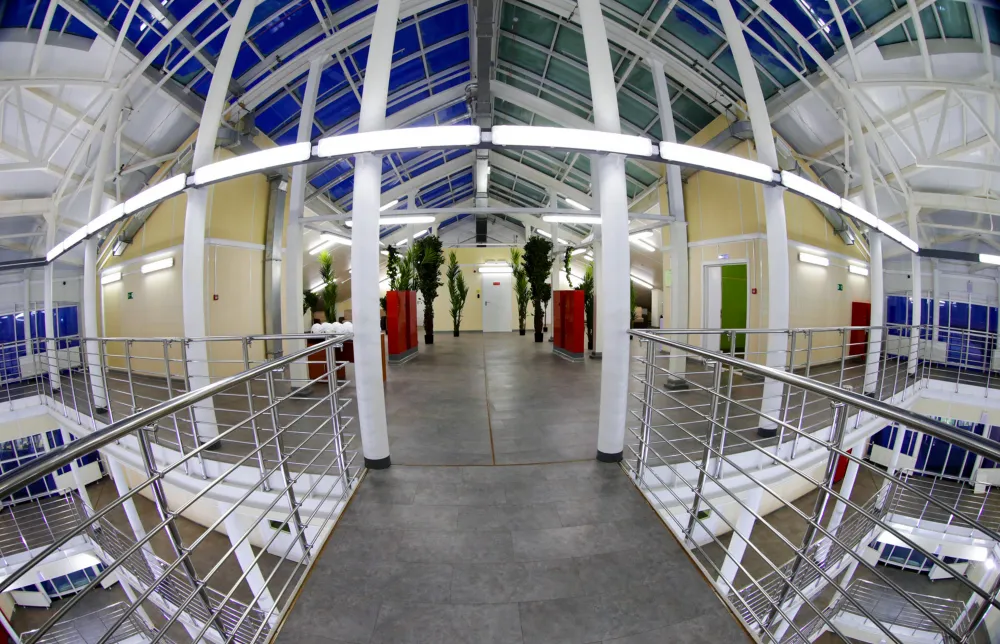
The base is heated by a large red-roofed generator complex.

All the buildings are on stilts, a defense against the cold and the winter snow, which can lie meters deep, and are joined by walkways:
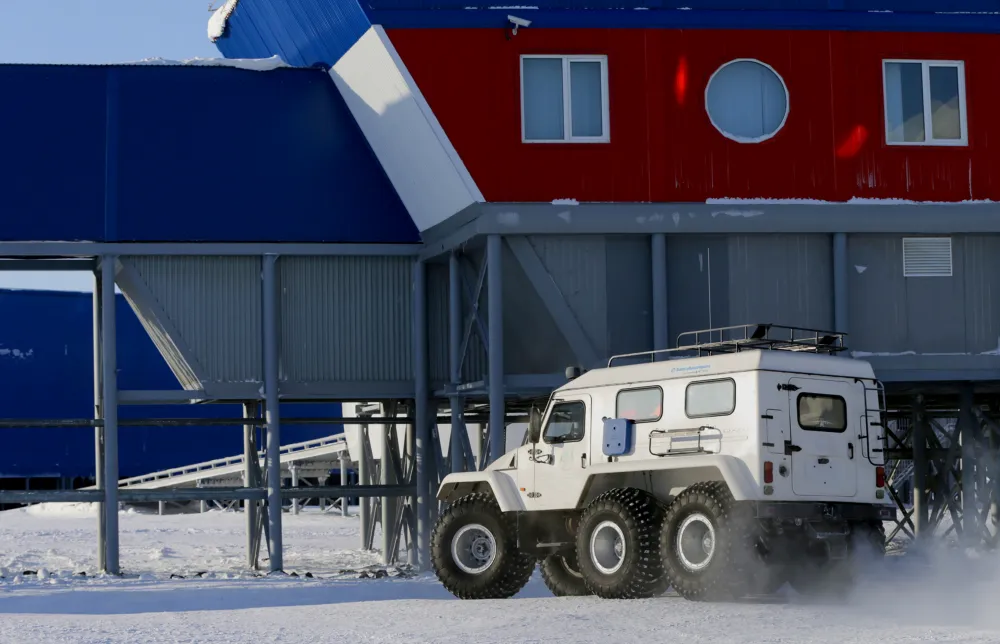
According to an English-language statement from the Russian MoD announcing the launch of the virtual tour, “Military infrastructure of the Arctic base included numerous special constructions, control centers, storages for special and military hardware, and autonomous energy unit.” A Russian-language statement went into more detail:
“As well as the living quarters, the complex includes an energy block consisting of a boiler, generating station and fuel cisterns, an automobile park consisting of a number of garage units for storing and servicing vehicles and special equipment, water pumping and treatment buildings, a recycling complex, storage for heating and lubrication materials, and a fueling point.”
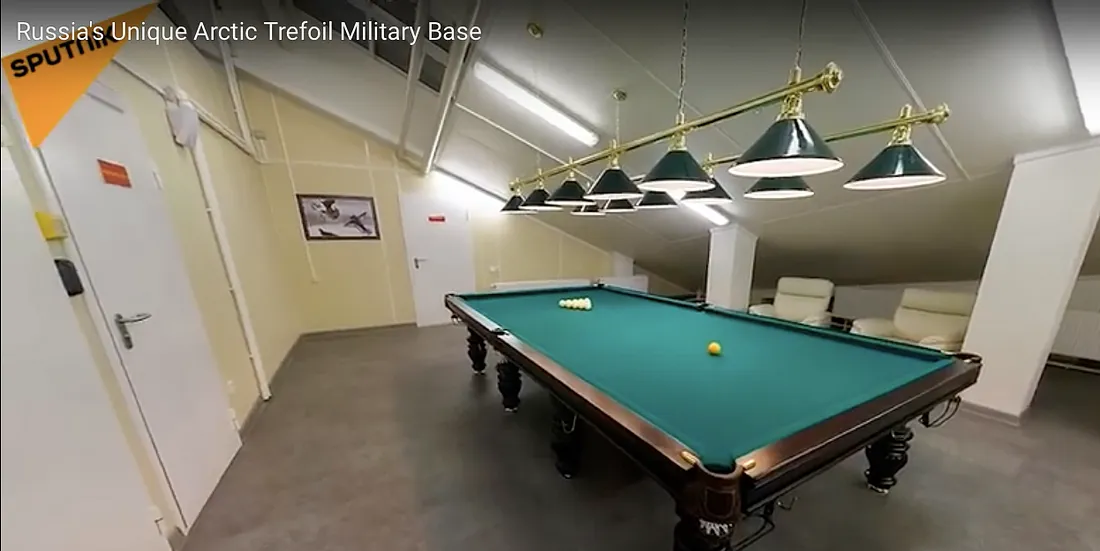
Understandably, no military details were revealed in the tour.
Selfies tell the story
Despite the Russian government’s careful selection of information, it is possible to more precisely identify the functions of the base. During Putin’s visit, he was shown a wall-sized plan of the base, footage of which was featured on Russian state TV. Even viewed alone, this reveals a certain amount of information about it.
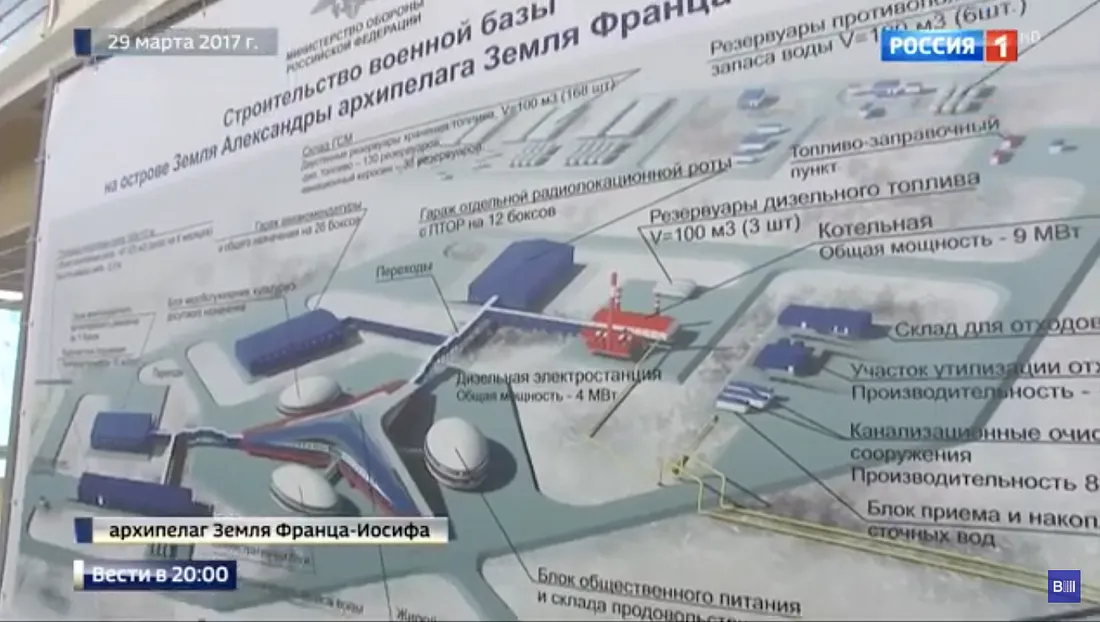
But it is not alone. During construction work in 2016–17, a number of builders attached to the project posted selfies on social media, showing themselves standing in front of the same plan.
Fortunately, one of them stood to the right of the shot, allowing us to see the left-hand side of the plan in sufficiently high resolution to identify the descriptions of most buildings, including a garage for an anti-aircraft division (Гараж зенитно-ракетного артиллерийского дивизиона)…
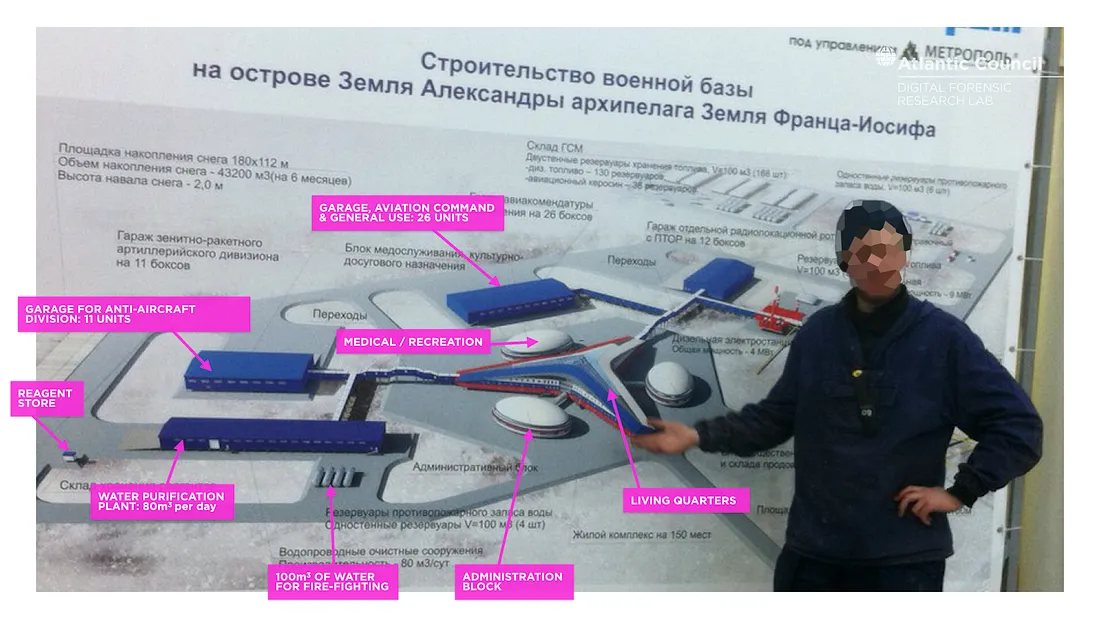
…while another stood to the left, allowing us to complete the picture, including a garage for a separate radio-location company (Гараж отдельной радиолокационной роты). The DFRLab verified these unofficial posts against one another and the official footage of Putin’s visit, confirming that they sited the same buildings in the same places.
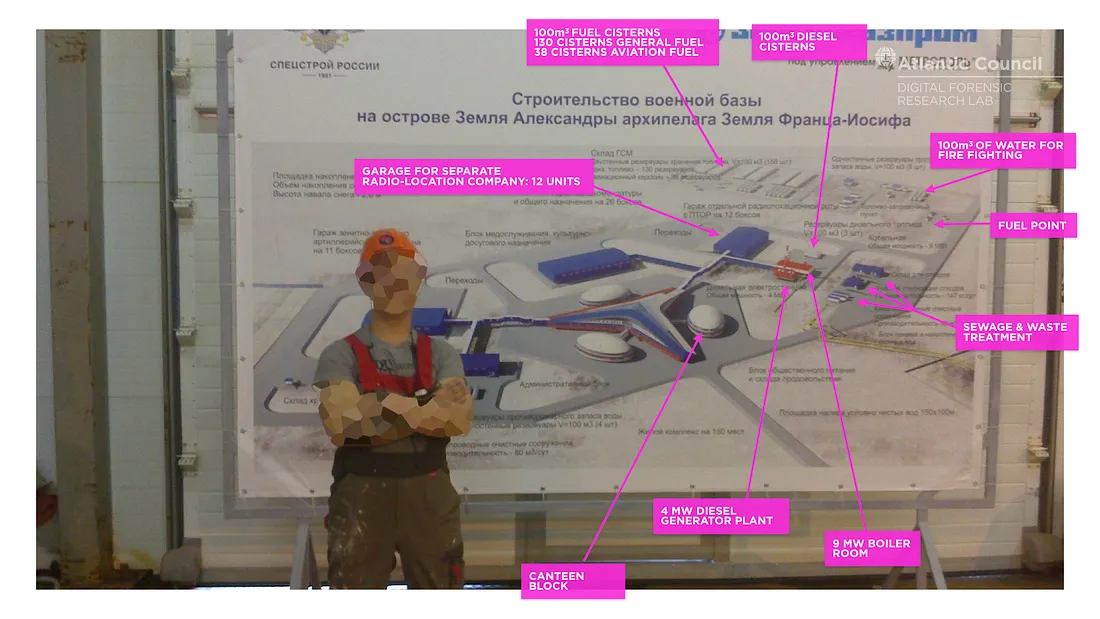
By comparing the plan with the photos published by the Ministry of Defense, the following buildings can be identified:
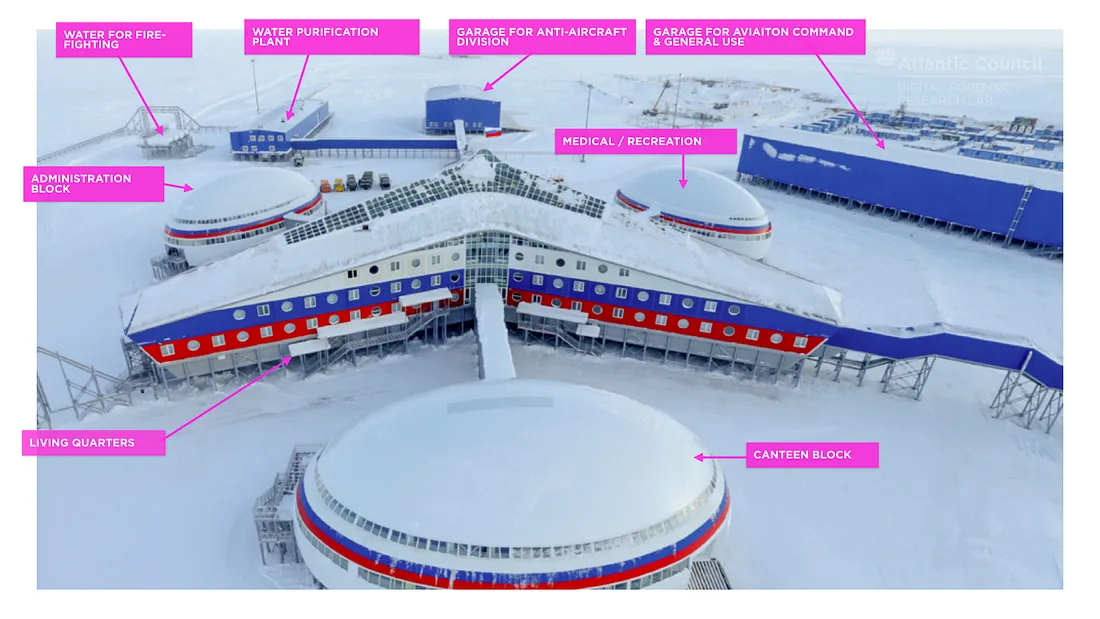
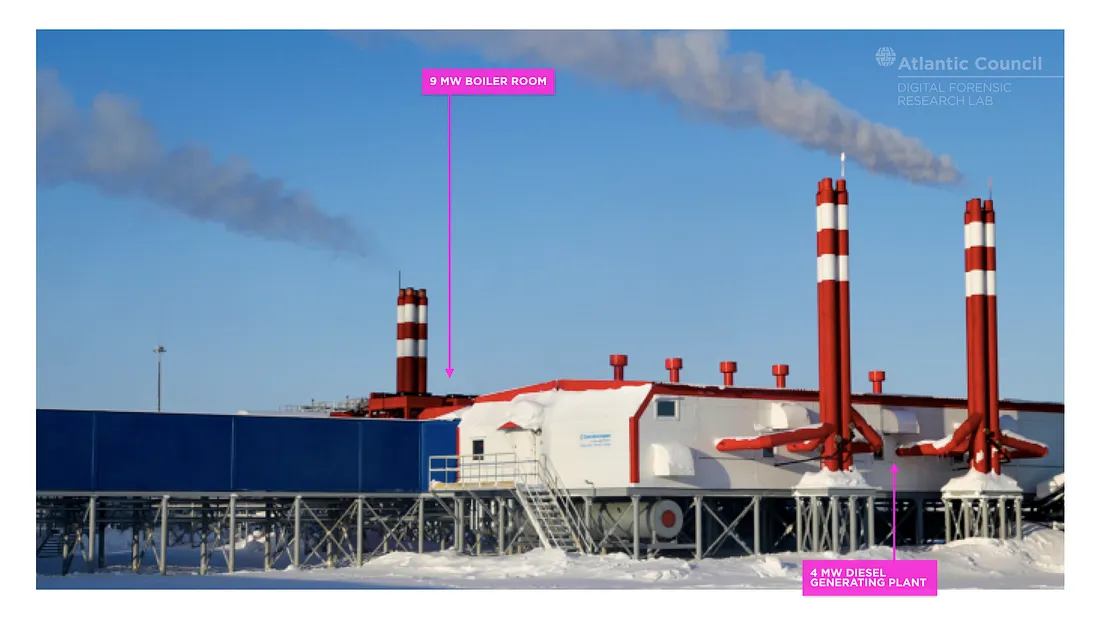
Photographs published by the Ministry of Defense during an official visit to the construction site in 2015 also revealed a number of vehicles which appear to relate to the “separate radio-location company:”
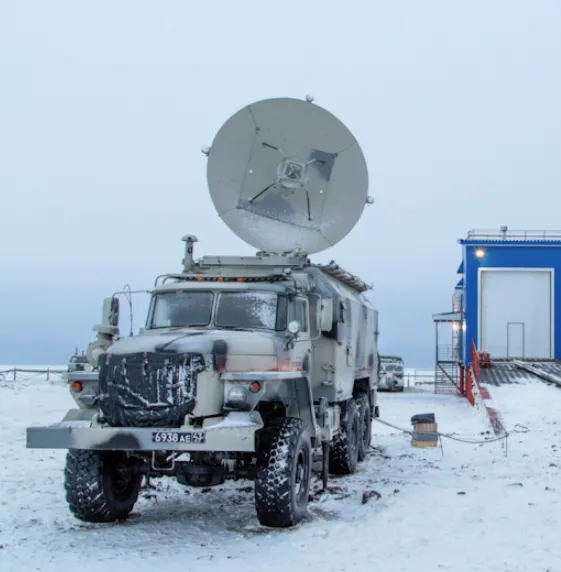
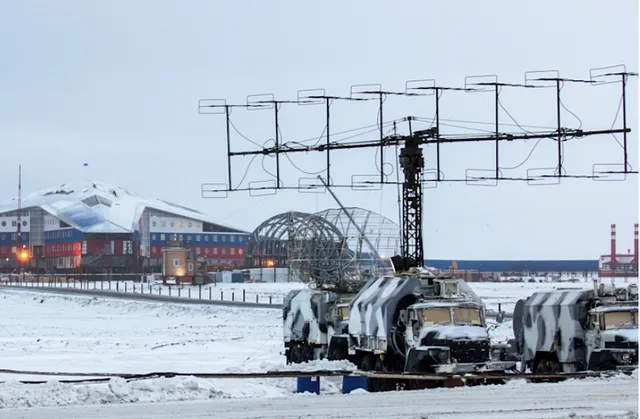
The large antenna appears to be a P-18 radar (NATO reporting name “Spoon Rest D,” Russian designation 1РЛ131 “Терек”), an early warning system with a reported range of 250 km.

The truck mounted with a dish resembles an R-441-OV satellite communications system.
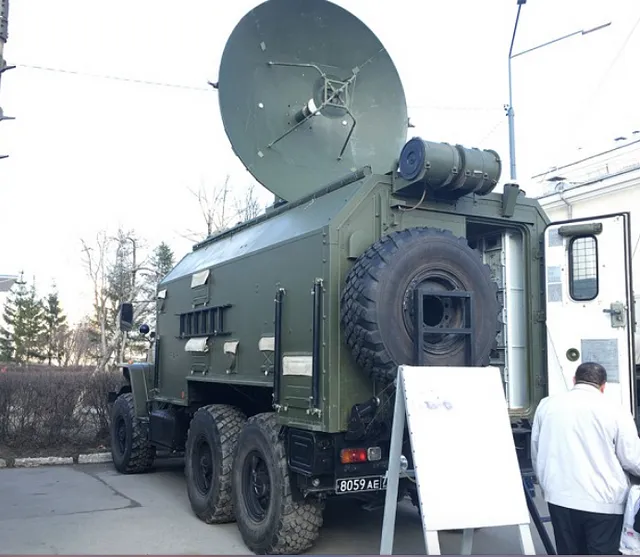
These images are marked as having been updated on the Ministry’s website on December 22, 2015. However, at that time, the Franz Josef Land archipelago would have been in permanent darkness, indicating that the shots were taken earlier in the year. They are consistent with the presence of a radiolocation company, as listed on the plan of the site; however, as the shots are at least 18 months old, it cannot be taken for granted that they indicate the current state of equipment on the base.
Northern Clover
Artic Trefoil is Russia’s second major new base in the Arctic. The first, dubbed “Northern Clover” (Северный клевер), is almost 2,000 kilometers to the East, on Kotelny Island, north of Siberia.
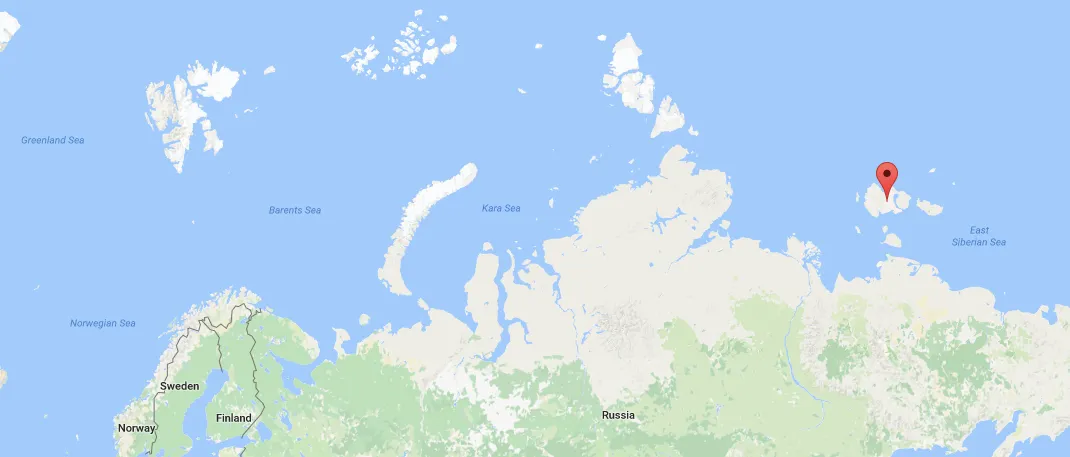
According to Russian Defense Ministry statements, it houses a tactical group of Russia’s Northern Fleet, numbering over 250 people. It is designed to be self-sustaining in supplies and fuel for a year and a half.
This base was also hailed with significant state media coverage when it opened in September 2015. Like Arctic Trefoil, it is blazoned in the Russian colors, and features a three-wing structure and a number of outbuildings joined by walkways. It offers various amenities, including volleyball and table tennis, and a sauna.
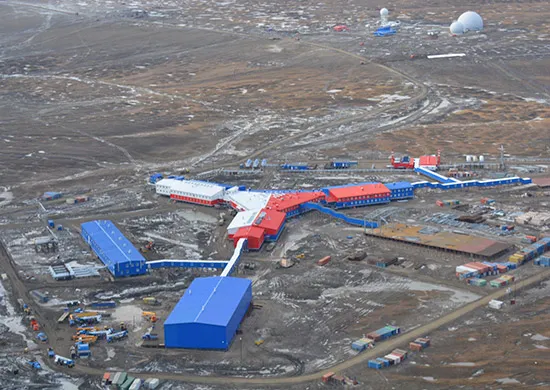
Also like Arctic Trefoil, one of its builders posted online an annotated image of part of the base. Again, we have chosen to protect the identity of the source.
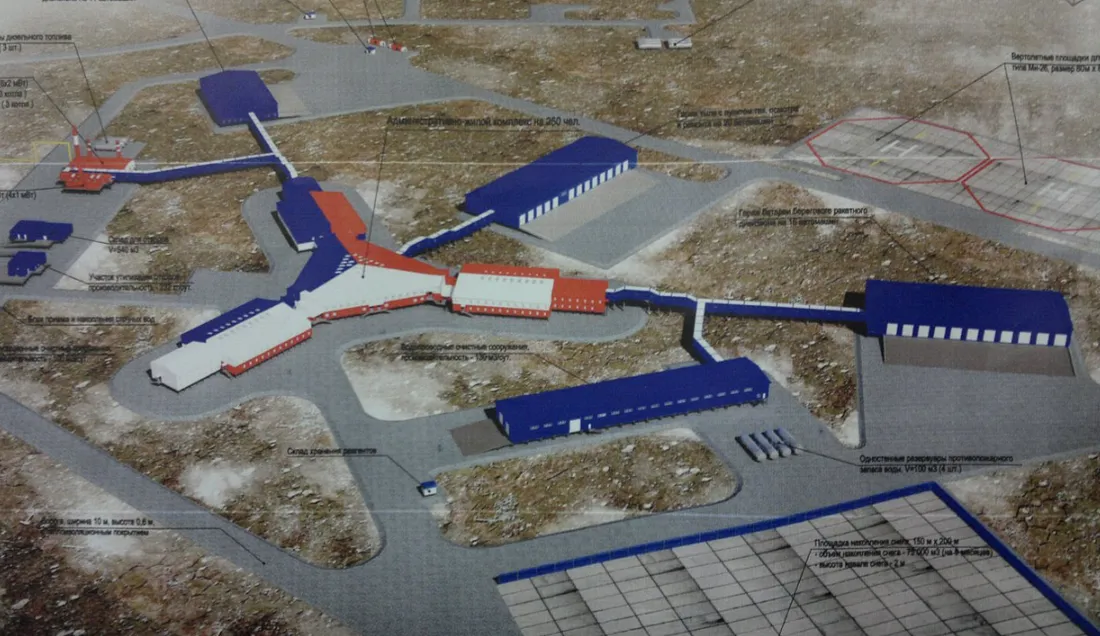
The resolution of this image is low, and not all features can be identified, but enough elements are clear for us to be able to name most of the buildings on the Ministry’s image, which was taken when the base was still under construction. These include what appears to be a garage for a coastal rocket division, as well as helipads for Mi-26 helicopters:
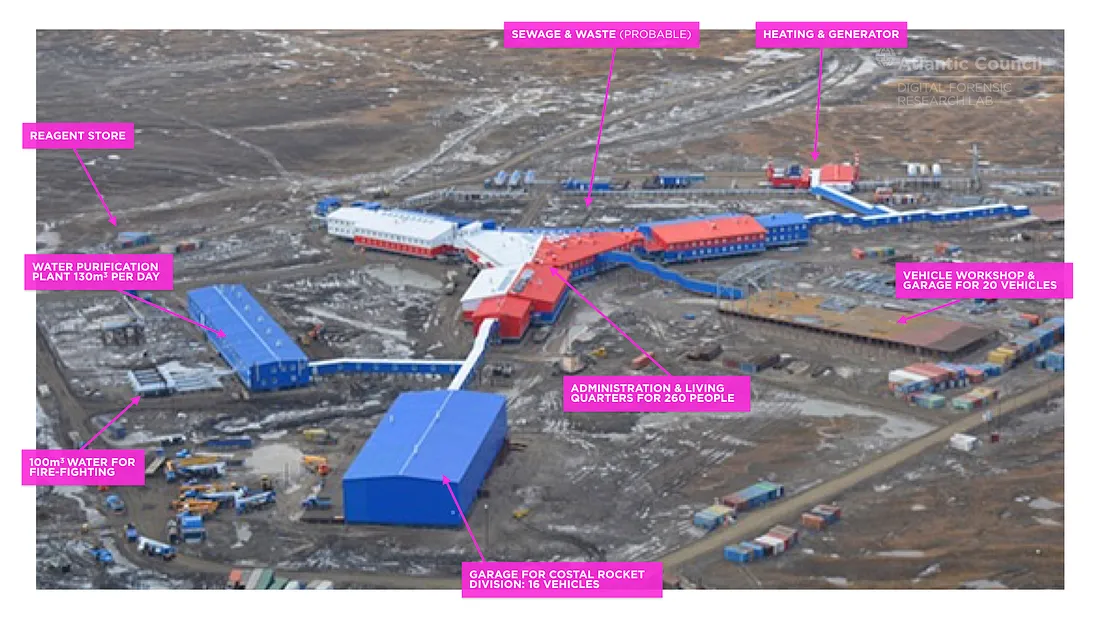
Conclusion
The Russian military has, understandably, maintained a degree of secrecy over its military complexes in the Arctic. However, Russia’s construction workers have not kept to the same standards, revealing detailed plans of both areas.
Thanks to these social media users, the accidentally revealed details fill in some of the gaps left by the MoD’s public relations exercises, and illustrate a little more of the functioning of Russia’s two newest Arctic bases.

